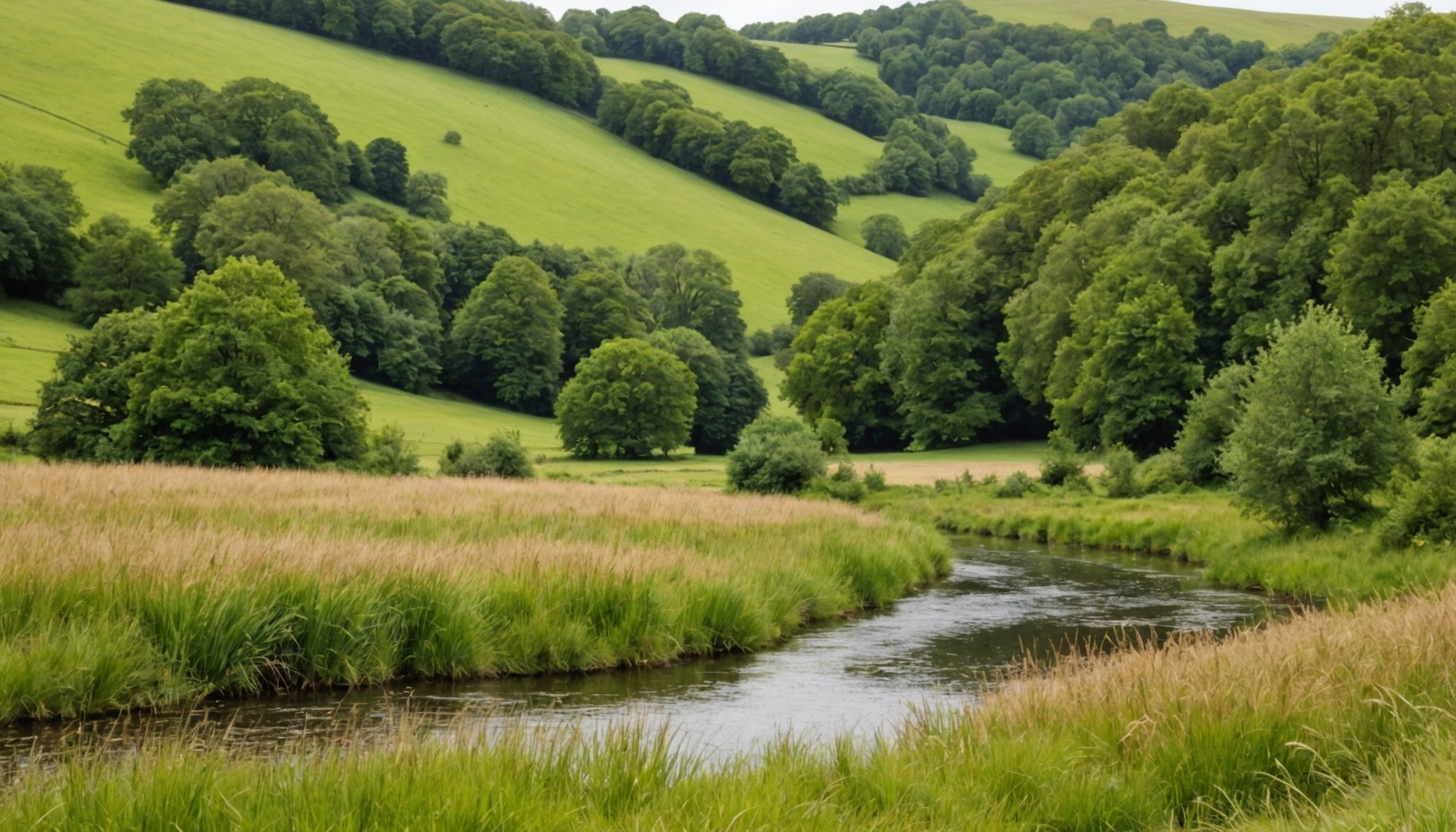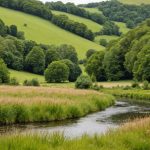Introduction to Habitat Restoration
Habitat restoration plays a crucial role in maintaining wildlife conservation across the UK. As natural ecosystems face a myriad of challenges, restoring habitats becomes paramount to preserving biodiversity. In essence, habitat restoration involves reviving natural habitats to their original state, fostering ecological resilience.
Landowner guidance is essential in these conservation efforts. Landowners, by working with environmental experts, can play a pivotal role in restoring landscapes, enhancing biodiversity, and supporting native species. Collaborating with wildlife organizations provides them with strategic direction and resources.
In parallel : Join the Movement: Vital Actions UK Citizens Can Take to Save the White-Clawed Crayfish
The principles of habitat restoration focus on repairing damaged ecosystems, often aiming to recover habitats degraded by human activities, such as agriculture or urbanization. Restoration may include reforestation, reintroducing native species, or reinforcing soil and water ecosystems.
Across the UK, restored lands provide vital life support systems for many species, bridging the gap between isolated wildlife areas. Through active wildlife conservation projects and the dedication of landowners, habitat restoration forms a backbone for vibrant ecological networks. By committing to these efforts, landowners can ensure the richness of the UK’s natural heritage persists for future generations.
This might interest you : Enhancing UK Farmlands: Cutting-Edge Hedgerow Techniques for Maximizing Biodiversity
Understanding Legal Considerations
Navigating the landscape of conservation law is critical for anyone involved in habitat restoration in the UK. Understanding the wildlife protection laws is not just beneficial but necessary to ensure the success of your restoration projects. Compliance with these laws ensures that restoration efforts do not inadvertently harm protected species or habitats.
UK conservation law encompasses a wide array of regulations, each crafted to support wildlife protection. These laws dictate how land can be managed and what substances or activities might be restricted to prevent environmental damage. For landowners, these regulations form a framework that dictates their responsibilities in biodiversity preservation.
Key among these regulations is the Wildlife and Countryside Act, which plays a fundamental role in protecting native flora and fauna. It acts as a guide for how land can be responsibly managed to support habitat restoration.
The importance of understanding and following these laws cannot be understated. Not only does adherence prevent legal repercussions, but it also contributes to more effective restoration outcomes. Landowners equipped with this knowledge can make informed decisions that align with legal standards, ultimately benefiting their projects and the broader ecosystem.
Exploring Funding Options
Finding financial support for habitat restoration can significantly enhance the feasibility of your projects. Numerous grants and conservation funding opportunities are available to aid UK landowners in their ecological endeavours. These funds not only bolster wildlife conservation but also inspire more landowners to partake in restoration activities.
Navigating these funding possibilities can seem daunting, but understanding the basics can make it manageable. Various government initiatives, nonprofit organisations, and private sectors offer habitat restoration grants. These programs provide financial aid to assist with costs related to soil improvement, native plant reintroduction, and habitat monitoring.
To increase your chances of securing funds, it’s vital to recognise the application process generally involves drafting a clear, concise proposal. Highlight the ecological benefits and long-term sustainability of your project. Make sure to include comprehensive budgets and timelines to strengthen your case.
A successful example is the Heritage Lottery Fund, which supports projects focused on preserving natural heritage. Numerous landowners have benefited, transforming degraded lands into thriving ecospaces. Engaging with these opportunities can not only enhance biodiversity but also offer economic incentives. Actively seek out these resources – the right funding can make a substantial difference.
Strategies for Native Species Reintroduction
Reintroducing native species is integral to enhancing biodiversity and maintaining ecological balance. Native flora and fauna are crucial to the recovery of habitats as they naturally integrate into existing ecosystems, supporting local food webs.
Best practices for introducing native species involve careful planning and assessment. Landowners should collaborate with ecologists to determine the environmental needs and challenges specific to their land. It’s essential to select species that have previously thrived in the area, avoiding non-native species that might disrupt ecological harmony.
Successful projects often follow a step-by-step approach, including habitat assessment, modifying land to suit native species, and gradual introduction to ensure adaptation. Regular monitoring and adjustments maintain ecological balance and aid in the protection of reintroduced populations.
Case studies reveal that strategic reintroductions can rejuvenate entire ecosystems. For instance, the reintroduction of the Red Kite bird in the UK has restored balance in local environments and revived community interest in conservation. By sharing successful case studies, landowners can gain insights and inspiration into implementing similar strategies, cementing the significance of native species for long-term habitat health and biodiversity enhancement.
Implementing Practical Restoration Techniques
Embarking on restoration techniques is vital for successful habitat management and land improvement. A deep understanding of these practices can significantly enhance the effectiveness of your projects. Effective habitat management begins with a thorough assessment of your land’s current ecological state. This includes identifying areas in need of restoration and planning interventions accordingly.
Modern tools and technologies are pivotal in facilitating restoration projects. Drone imagery, GIS mapping, and soil sensors provide valuable data for understanding habitat conditions. Such advanced methods enable precise planning and execution, ensuring that restoration efforts are both efficient and sustainable.
Implementing a step-by-step guide is recommended for comprehensive restoration strategies. Initially, establish clear conservation goals and identify key species and habitats in need of restoration. Design a tailored restoration plan that addresses these needs, accounting for local weather patterns and seasonal changes.
Effective techniques often include soil stabilization, reforestation, and wetland rebuilding, enhancing land resilience. Monitoring progress regularly ensures interventions yield desired outcomes and maintains ecological integrity. By using these practical techniques and tools, landowners can achieve long-term success in habitat restoration, contributing positively to UK biodiversity and the broader environment.
Assessing Environmental Impact
In the realm of habitat restoration, conducting thorough environmental assessments is essential. These assessments evaluate the current state of the ecosystem, identifying key areas that require restoration. They offer baselines to measure the effectiveness of restoration efforts, aiding both planning and future adaptations.
To accurately monitor changes and habitat success, advanced tools are indispensable. Technologies, like remote sensing and drone imagery, provide comprehensive data on habitat conditions. These tools allow for detailed observation of changes over time, enabling timely interventions when necessary.
Key metrics for evaluating restoration effectiveness include species diversity, soil quality, and water resource health. Regular monitoring of these metrics ensures that the restoration continues to benefit the ecosystem without unintended negative impacts. By doing so, projects can maintain ecological integrity and contribute to broader wildlife conservation goals.
Implementing these evaluation practices not only verifies the impact of restoration strategies but also encourages adaptive management. By using effective habitat monitoring techniques, landowners can make informed decisions to support ecological improvements, aligning with their broader conservation-related ambitions. This structured approach is crucial for showcasing the long-term benefits of habitat restoration efforts across different landscapes.
Success Stories from the Field
Experience the triumphs of wildlife conservation success through compelling restoration case studies and landowner experiences. These narratives not only illuminate the path to ecological recovery but also inspire those considering similar ventures.
One notable case study is the revival of Scotland’s Flow Country, where dedicated efforts transformed a monoculture bogland into a thriving, biodiverse habitat. This project, hailed as a triumph, showcased the benefits of strategic habitat restoration, enhancing local biodiversity.
Landowners, pivotal in these transformations, often share insights into their journey. For example, an interview with a rewilding advocate from Somerset reveals the power of integrating native species and sustainable land practices. Their story highlights how perseverance and adaptation lead to flourishing ecosystems.
Lessons learned from these stories include the necessity of adaptive management and genuine collaboration with ecological experts. This real-world wisdom, combined with innovative restoration techniques, can guide new projects. By examining these restoration case studies, landowners gain valuable insights, sparking initiatives that restore nature’s balance.
Embrace the inspiration these success stories offer and embark on your conservation journey, equipped with restoration case studies and wildlife conservation success strategies.
Practical Tips and Resources for Landowners
Empowering landowners with the right tools and knowledge can significantly impact habitat restoration success. Numerous conservation resources are available to guide landowners through sustainable habitat management, providing essential support for their ecological endeavors.
Organizations such as the Royal Society for the Protection of Birds (RSPB) and the Wildlife Trusts offer valuable resources and advice for improving biodiversity. These groups can help landowners with species monitoring, land management, and habitat enhancement, ensuring designed strategies are effective.
In addition to organizational resources, practical habitat restoration tips can be invaluable. These include considering seasonal changes when planning actions, ensuring the introduction of fauna and flora aligns with the local ecological balance. Continuously monitoring changes ensures interventions remain consistent with conservation goals.
Networking opportunities are abundant in the conservation community. Participating in local forums or conservation workshops can open doors to collaboration with other landowners and experts. Learning from peers and sharing experiences helps refine strategies and enhances the collective wildlife conservation effort.
Seek out these landowner tools and leverage the collective expertise to implement impactful habitat restoration and strong ecological networks. This commitment will not only enrich your land but also contribute positively to the broader environmental landscape.










